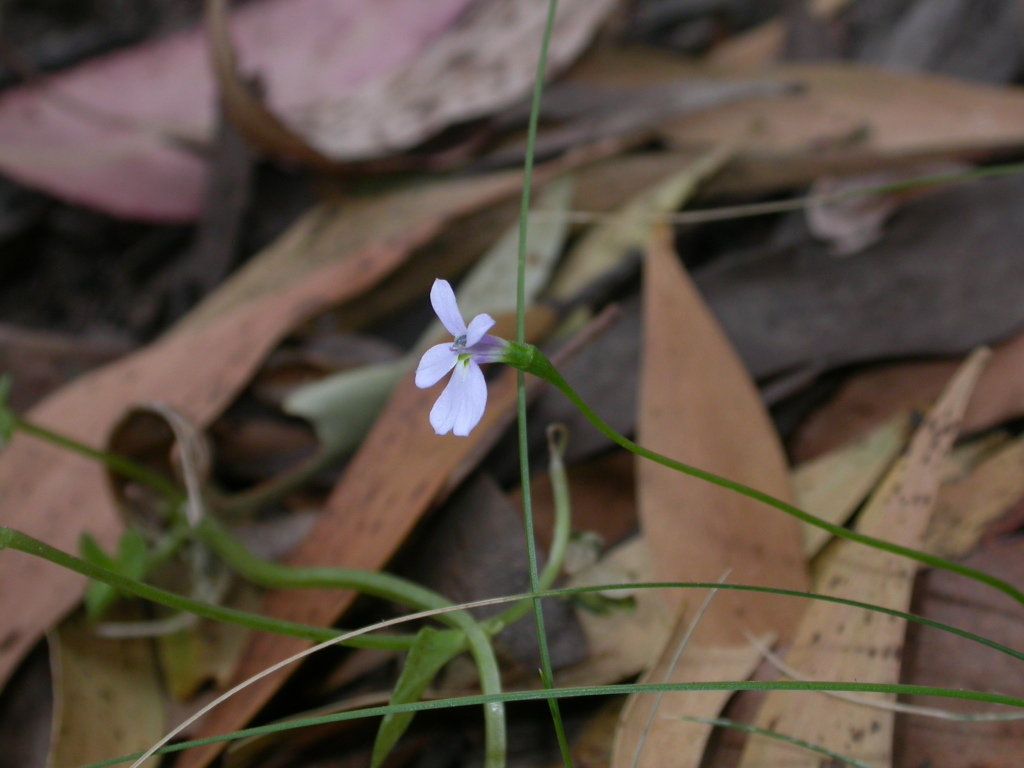Lobelia beaugleholei
Albr. Showy LobeliaProstrate to decumbent perennial, glabrous or rarely sparsely and minutely pubescent; stems rooting at nodes. Leaves ovate to c. spathulate, the lowest sometimes orbicular, 4–22 mm long, 3–20 mm wide, toothed or sinuate; petiole 0–15 mm long. Flowers axillary, solitary, irregularly spaced, bisexual; pedicels (10–)30–110 mm long. Calyx-lobes 1.4–2.5 mm long, sometimes toothed near base; corolla weakly 2-lipped, (6–)9–12 mm long, light violet, upper 2 lobes spreading or erect, narrowly elliptic to oblanceolate, 3–6.5 mm long, 1–2.5 mm wide, lower 3 lobes spreading, oblanceolate to obovate, 4–8.5 mm long, 1.5–4 mm wide, tube 3–4.8 mm long, split to within 1.2–2 mm of base, with fine retrorse hairs internally; filaments 3.7–4.5 mm long, anther tube 1.2–1.7 mm long, with fine acute hairs on the exterior surface, lower 2 anthers each with an apical seta 0.3–0.6 mm long. Capsule obconical, slightly compressed, 5.5–10.5 mm long; seeds ellipsoid, slightly compressed, (0.8–)1–1.1 mm long, light brown, reticulate, alveoles c. isodiametric (appearing pitted).
GleP, VVP, OtP, WaP, OtR. Also SA. Confined in Victoria to the south-west, occurring almost exclusively on black organic loam soils, in the vicinity of swamps and drainage lines, rarely on red clays. Flowers Nov.-Feb. Fruits Jan.-Mar.
This and a small number of other species have attributes that are somewhat intermediate between Lobelia and Isotoma. In particular the depth to which the corolla-tube is split and the degree to which the staminal filaments are adnate to the corolla-tube are somewhat intermediate between the 2 genera.
Albrecht, D.E.; Walsh, N.G. (1999). Campanulaceae. In: Walsh, N.G.; Entwisle, T.J., Flora of Victoria Vol. 4, Cornaceae to Asteraceae, pp. 553–553. Inkata Press, Melbourne.
 Spinning
Spinning
